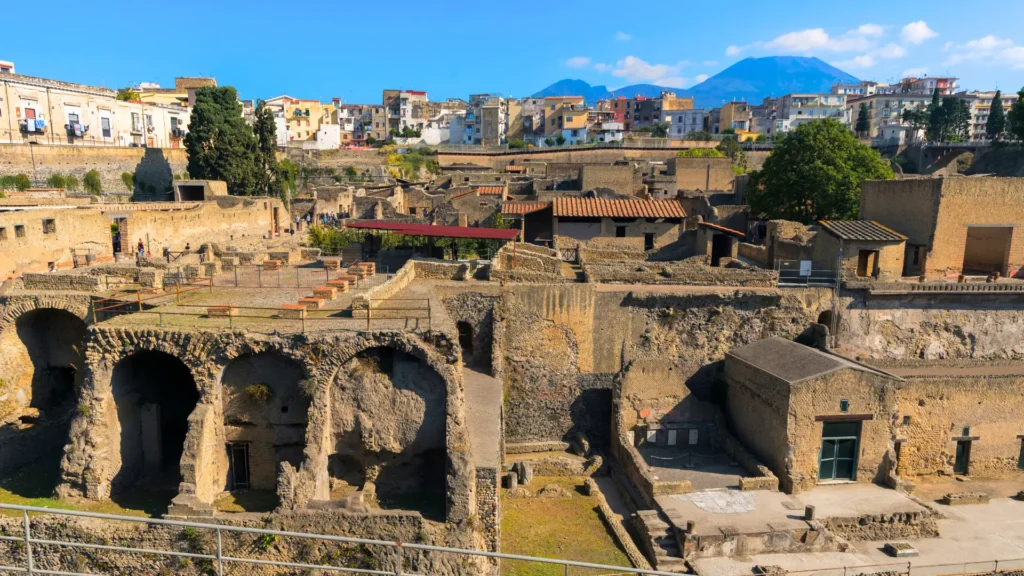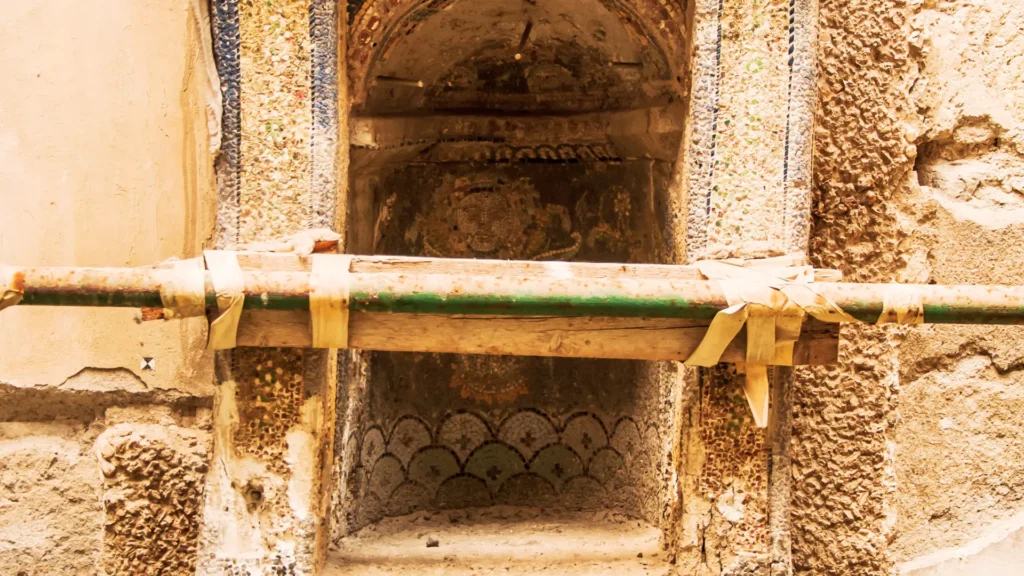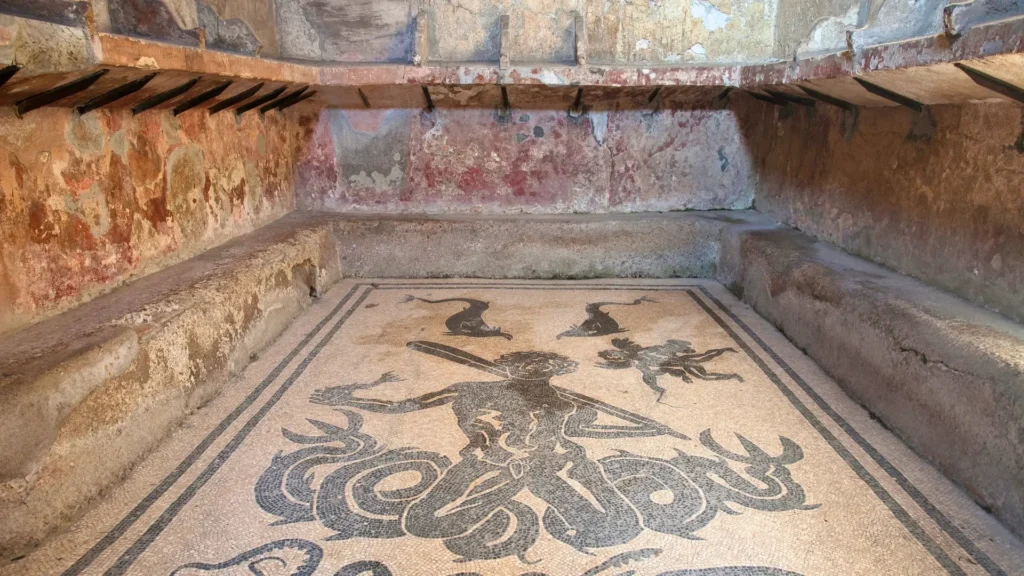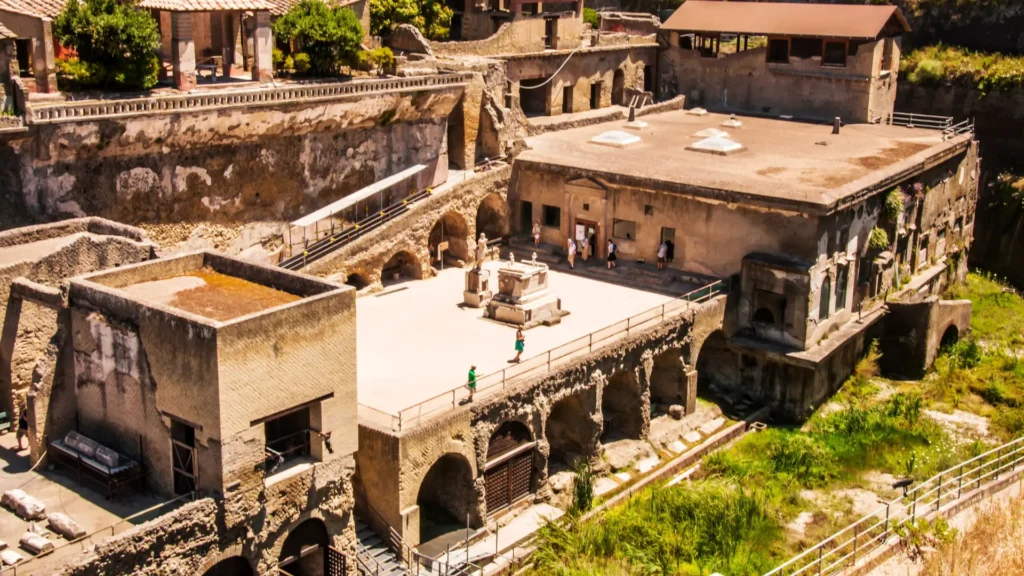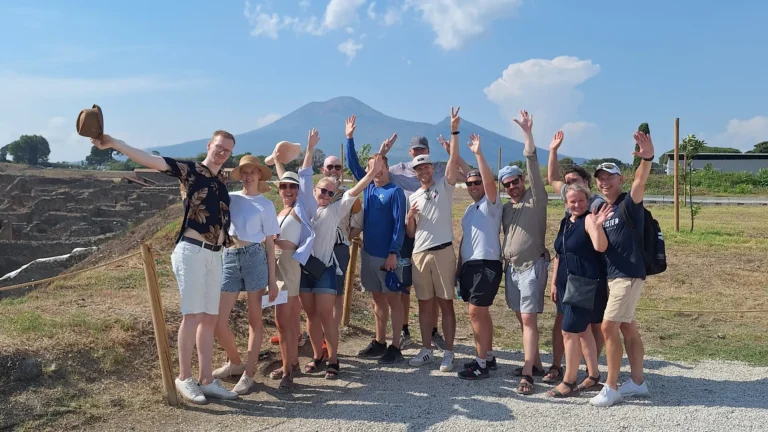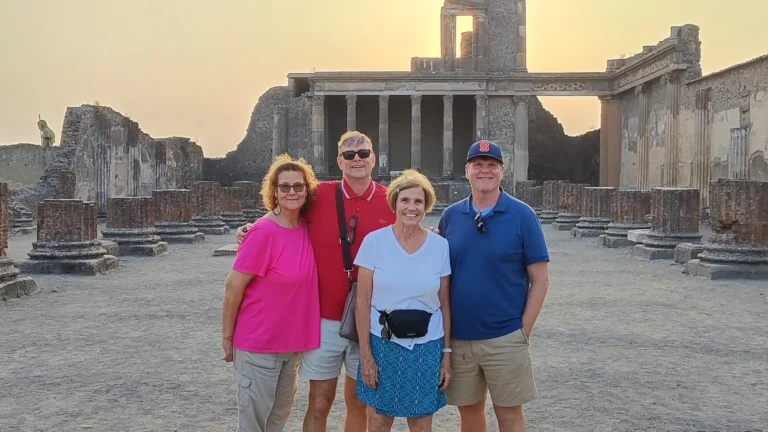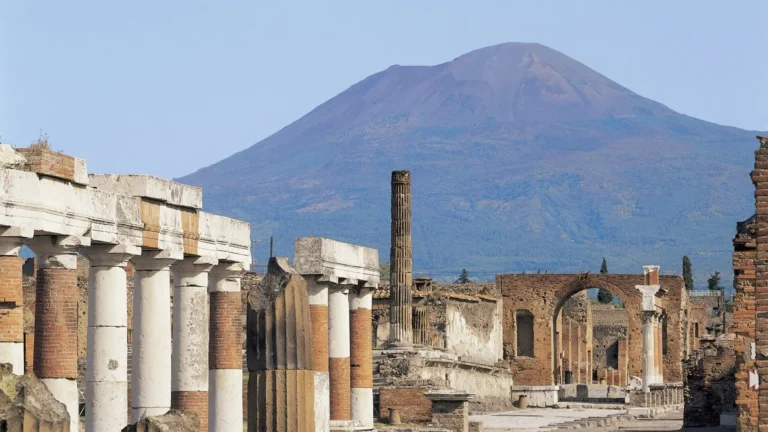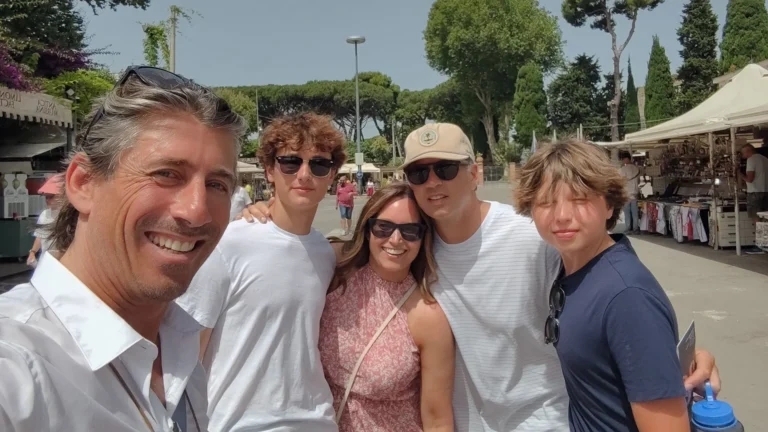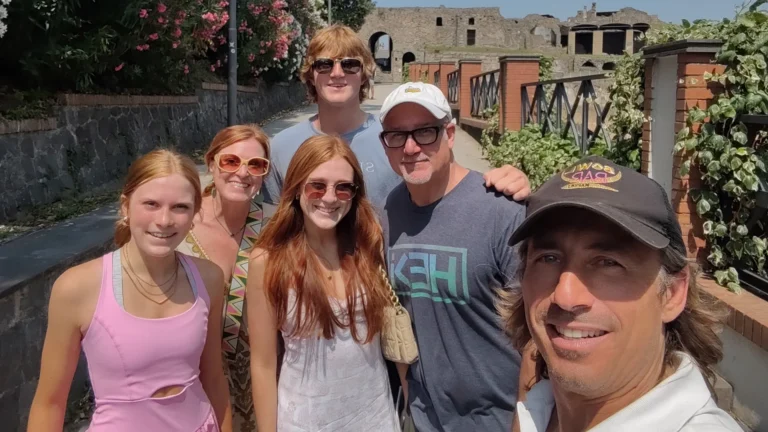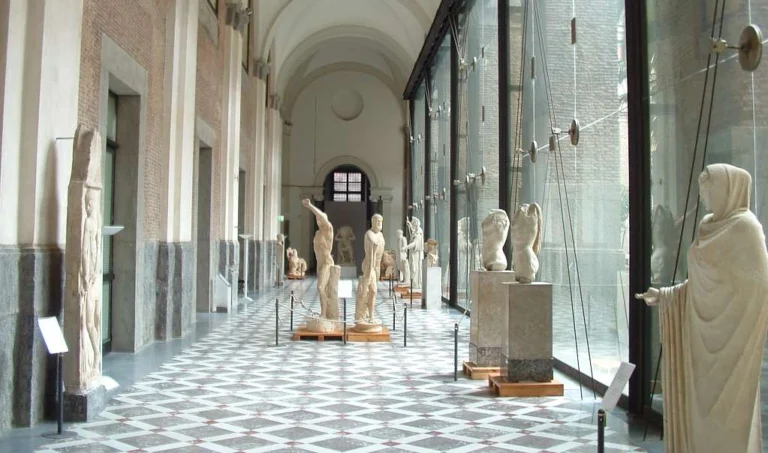Often overshadowed by its larger neighbor Pompeii, Herculaneum is a remarkably well-preserved ancient Roman town that offers a quieter yet equally fascinating glimpse into the past. Buried by the same catastrophic eruption of Mount Vesuvius in 79 AD, Herculaneum provides a unique perspective on Roman life, with intact multi-story buildings, vibrant frescoes, and even preserved organic materials such as wooden furniture, food, and textiles details rarely found in other archaeological sites.
Why visit Herculaneum ruins?
Firstly, unlike Pompeii, which was covered in a thick layer of volcanic ash, Herculaneum was buried under a denser, superheated pyroclastic flow. The flow acted as a natural seal, preserving wooden structures, furniture, and even food in exceptional detail. This unique preservation has allowed archaeologists to uncover a more intimate and detailed snapshot of Roman daily life, revealing elements rarely found in other ancient sites.
Secondly, walking through the streets of Herculaneum feels like stepping directly into a Roman neighborhood, complete with well-preserved two-story homes, intricate floor mosaics, and wooden beams still intact. Thirdly, the level of detail in Herculaneum offers an unparalleled window into the daily lives of its ancient inhabitants, making it a must-visit for history enthusiasts.
Archeological attractions in Herculaneum
House of the Wooden Partition
One of the most remarkable residences in Herculaneum, this house stands out for its preserved wooden screens and beams—a rare and exceptional feature in ancient Roman ruins. But, unlike Pompeii, where wooden structures were lost to time, the unique conditions of Herculaneum’s burial under volcanic material allowed these delicate architectural elements to survive. On the other hand, the sliding wooden doors that once separated rooms provide a fascinating glimpse into Roman architecture and interior design, highlighting the sophisticated craftsmanship and functional aesthetics of the era.
Villa of the Papyri
This luxurious seaside villa, once belonged to a wealthy Roman family, is renowned above all for its collection of ancient scrolls (papyri), making it one of the most intriguing and fashinating archaeological sites in Herculaneum. Moreover, while much of the Villa of the Papyri remains unexcavated, its intricate mosaics, elegant marble statues, and beautifully landscaped gardens offer a glimpse into the opulence of elite Roman society. Many of the villa’s priceless artifacts are now housed in the MOMA, the National Archaeological Museum of Naples, preserving the legacy of this extraordinary residence.
Herculaneum thermal baths (Thermae)
Herculaneum’s public baths are among the best-preserved examples of Roman bathing culture, offering visitors a unique glimpse into daily life in the ancient city. Infact, these well-maintained thermal baths feature distinct chambers, including the frigidarium (cold bath) and caldarium (hot bath), where Romans would follow a ritual of cleansing and relaxation. Above all, the intricate mosaics adorning the floors and walls showcase the artistic refinement of the time, making these baths a remarkable testament to Roman engineering and social traditions.
The boat sheds skeletons (Forici)
Near the ancient shoreline of Herculaneum, archaeologists discovered boat sheds (fornici) containing the skeletons of over three hundreds people who sought refuge during the catastrophic eruption of Mount Vesuvius, waiting for boats to take them to safety. These unfortunate victims, trapped by the superheated pyroclastic surge, offer a haunting yet deeply human connection to the tragedy that struck the city. In conclusion, this somber archaeological site serves as a powerful reminder of the destruction that befell Herculaneum and the real lives behind the ruins, and makes it one of the most emotionally impactful places to visit.
Herculaneum: an intimate glimpse into Ancient Life, away from Pompeii's crowds
Herculaneum is significantly smaller and less crowded than Pompeii, making it an ideal destination for those looking to explore at a relaxed pace. Its compact layout allows visitors to see much of the site in just a few hours, making it a perfect half-day trip from Naples. In other words, unlike the bustling crowds of Pompeii, Herculaneum’s quieter atmosphere creates a more reflective and immersive experience, allowing visitors to truly appreciate the remarkable preservation of its ancient streets, homes, and public spaces.
Tips for visiting Herculaneum
Getting there
Herculaneum is easily accessible from Naples by train. The Circumvesuviana line stops at Ercolano Scavi station, just a short walk from the site
Best time to visit
Early mornings or late afternoons are the best times to avoid crowds and enjoy cooler temperatures
Combine with Pompeii
I organize visits to both Herculaneum and Pompeii for you, so you can fully explore and appreciate the differences between these two fascinating ancient cities
